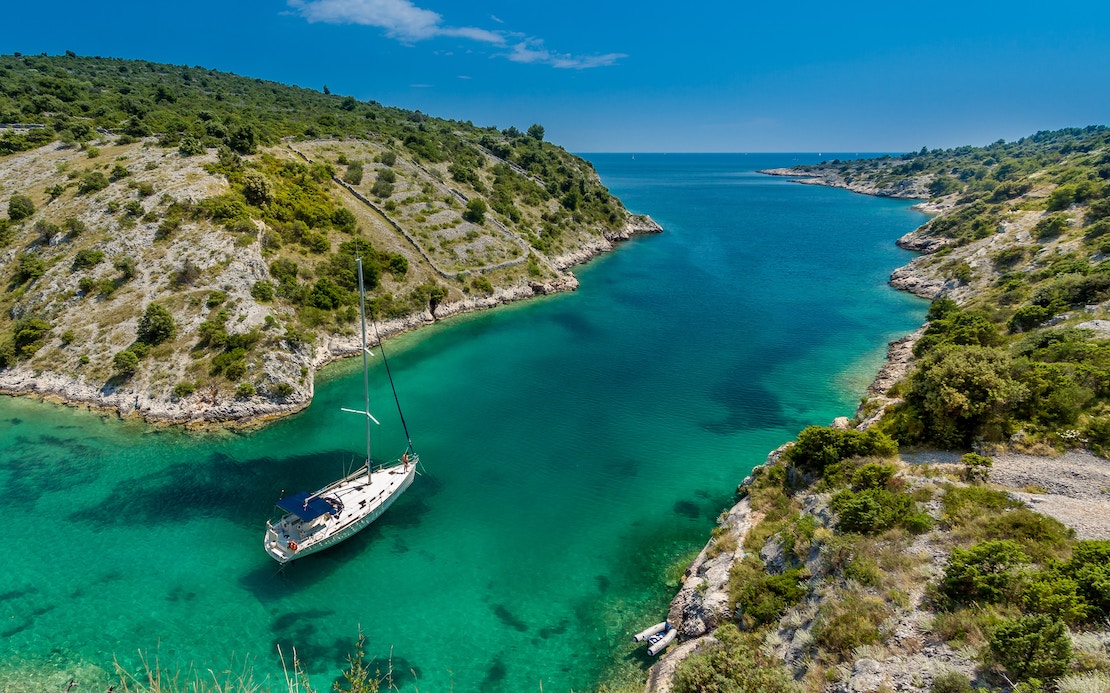Be charmed by the architecture of Amsterdam, The Netherlands. Experience the Renaissance era in Florence, Italy. Take a literary tour in Dublin, Ireland. Doesn’t that sound amazing? If the answer is yes, clearly, it’s time to go to Europe.
If you’re thinking it’s going to be way too pricey, think again! Below you’ll find our top ten tips to help get you packing for your trip!
1. Know Cheap Flights to Europe Exist — and Hunt for Them!
As of 2024, the transatlantic aviation landscape has expanded significantly, with over 500 routes now connecting North America and Europe—a notable increase from previous years. This growth is attributed to heightened competition among airlines, enhanced operational efficiencies, and the introduction of more fuel-efficient aircraft.

What does this mean for you? More affordable airfare options! For instance, during the summer of 2024, round-trip flights from the U.S. to Europe averaged $918, marking a 5% decrease from the previous year.
In addition to checking major travel sites like Kayak and Expedia, be sure to explore deals directly from airlines, including budget carriers like Ryanair, which is also great for hopping between European destinations.
2. Be Flexible and Take Deals to Europe Offered by Low-Cost Airlines
Thanks to Europe’s low-cost airlines, many incredible deals pop up from time to time. Stay on the lookout for these.
If you can be flexible with your dates and departure point, you’ll save lots of cash. Chances are a cheap flight somewhere near your home exists.

For instance, in 2024, Play Airlines launched a summer sale featuring one-way flights from the U.S. to Europe starting at just $79. This promotion included destinations like Iceland, Dublin, Berlin, Paris, and London, making European adventures more accessible than ever.
By staying alert for such promotions and maintaining flexibility in travel plans, you can seize these opportunities to experience Europe without straining your budgets. Bonus tip: Pack light to save even more on luggage fees!
3. Go to Europe During Off-Season
Going to Europe during peak travel times, such as late spring, can increase your costs tremendously. That’s because transportation and lodging costs may be as much as double what they are during non-peak season.

According to a report in USA Today, the cheapest time to go to Europe is between November and March (and not during holidays). This is when you’ll find deals.
If you don’t want to encounter potentially cold weather, go during shoulder season. That would be in months like April and October.
4. Use Miles and Points to Get to Europe
Perhaps you have some airline miles and/or hotel points that can help reduce the overall cost of travel. If not, go get some.
For instance, with good enough credit, you can qualify for credit cards with large signup bonuses. You must meet initial spending requirements to get the points, but when you do, you can save hundreds of dollars on your European adventure. With some cards, you may be able to even get a free flight.
Just a note: Be careful whenever using a credit card and spend within your means.
5. Intern in Europe
Did you know you can enjoy life in Europe’s great cities while gaining valuable work experience? If that sounds like a good option, then start looking for internships in Europe now. Because plenty of them exist.

Europe is a treasure trove of internship opportunities, offering something for everyone, from dynamic industries to rich cultural experiences. Top destinations like Greece captivate with their medical and conservation projects, while Spain buzzes with vibrant industries and impactful social programs.
For tech enthusiasts, the Czech Republic offers cutting-edge opportunities, while Ireland excels in hospitality and tourism. Creative minds will thrive in Italy’s artistic landscape, and Romania provides affordable internships in emerging fields like veterinary medicine.
Do I Need a Visa to Intern in Europe?
When considering an internship in Europe, whether or not you need a visa largely depends on your nationality and the specific country where the internship will take place.

For instance, if you are an EU citizen, you do not need a visa for internships within the European Union, European Economic Area, or European Free Trade Area. This also applies to citizens of certain non-EU countries, including Canada, Japan, Australia, New Zealand, the United States, and South Korea.
Non-EU citizens generally need to obtain a visa for a European Union Internship. The type of visa required can vary based on the duration of the internship. For example, if your internship or training program is less than 3 months, you will need a Type C visa (Schengen visa). If the program lasts more than 3 months, a different type of visa may be required.
The Type C Schengen Visa offers a practical option for short-term internships (up to 90 days within a 180-day period) in the Schengen area, which includes most EU countries. However, this visa does not permit paid employment, so it’s important to check the specific conditions attached to the visa.
It’s essential to research country-specific rules, budget for living costs, and explore flexible remote options. Tailoring your applications and planning ahead can open doors to transformative experiences that not only enhance your resume but also broaden your global perspective and professional network. Whether on-site or remote, interning in Europe is a worthwhile step towards a brighter career.
6. Volunteer to Help Nature in Europe
What’s great about participating in environmental conservation programs in Europe is that not only can you experience and protect the continent’s spectacular nature, but you also can save money as most of these programs include accommodation.

- Italy: Immerse yourself in climate action and sustainable farming projects.
- Spain: The Marine Conservation in Barcelona program combines scuba diving with environmental conservation efforts to clean the Mediterranean seabed.
- Portugal: This Horse Patrolling and Environmental Conservation program focuses on environmental education and conservation efforts
- Greece: Try out this Sea Turtle and Marine Conservation project!
7. Work on a Vineyard in Europe
Why pay to travel when you can get paid to travel?
Now, there’s an idea. One popular way to make travel to Europe more affordable is by working in a vineyard.
France, renowned for its rich wine heritage, offers numerous opportunities for seasonal vineyard work. Regions like Bordeaux and Languedoc, facing labor shortages, are actively seeking workers for tasks such as grape picking and vine maintenance. These positions often provide compensation, meals, and accommodations, immersing you in the local culture and winemaking traditions.
Italy also presents enticing prospects. Through platforms like WWOOF Italy, volunteers can engage in vineyard activities, from harvesting to assisting in wine production, in exchange for room and board. This hands-on experience not only makes travel more affordable but also offers a deep dive into Italy’s winemaking processes.
Be sure to check any visa specifications that may apply to you based on your citizenship!
8. Teach English in Europe
Teaching English in Europe offers a unique blend of cultural immersion, professional development, and personal growth. Bustling cities like Barcelona, Lisbon, and Rome, provide ample opportunities for educators in language schools, private tutoring, and corporate training.

TEFL certification is often essential, and learning the local language can enrich the experience. This credential is often essential and demonstrates your commitment and preparedness. Check out the following programs:
- Get TEFL Certified to Teach English in Spain
- Get TEFL Certified to Teach English in Italy
- Get TEFL Certified to Teach English in France
- Get TEFL Certified in Greece
- Get TEFL Certified in the Czech Republic
Affordability and high demand make destinations like Prague, Miercurea Ciuc, and Chios attractive. Opportunities include working in schools, private tutoring, and volunteering. Lower living costs mean you can stretch your earnings while exploring rich cultures and landscapes.
Non-EU citizens should research visa requirements thoroughly, as they vary by country and can affect employment opportunities.
9. Find a Cheap Package Deal for Europe
From discount Mediterranean cruises to cheap tour packages you can find an all-inclusive deal that is within your budget.

There are many places you can search for such deals. Online travel platforms come to mind, but you have other options.
Get to Europe and Have a Blast!
From the culinary masterpieces in Paris, France to the Széchenyi Thermal Bath in Budapest, Hungary to the Grand Bazaar in Istanbul, Turkey, few places on earth delight the senses and stimulate the mind like Europe. It shouldn’t be a surprise that seven out of the 10 most-visited countries on earth are in Europe.

If the only thing that was preventing you from going was the cost, know you can overcome that obstacle. The 9 cheap ways to get to Europe are all worth considering. Who knows? You can maybe even blend some of these methods together to create the ultimate affordable journey to Europe. Or check out our Fundraising guide to see how you can save even more!
So, why wait any longer? Your European Adventure awaits!

























Nick Callos · Writer
With a BA in English Literature & Writing from Boston College, Nick researches and writes about volunteer, intern, and teach abroad programs worldwide. He has studied abroad and taught English in Chengdu, China, and aims to help fellow travelers make a lasting impact on the communities they visit.